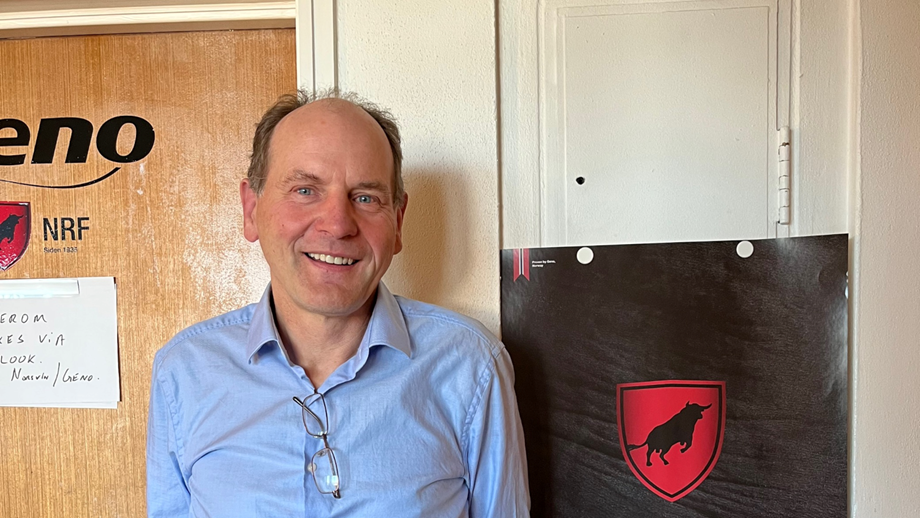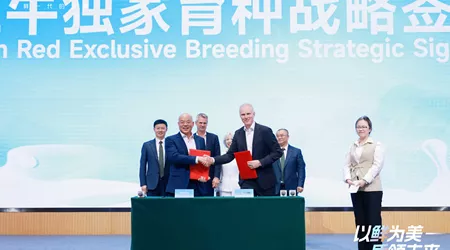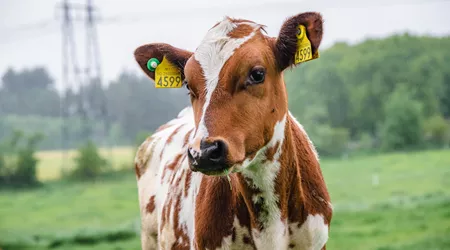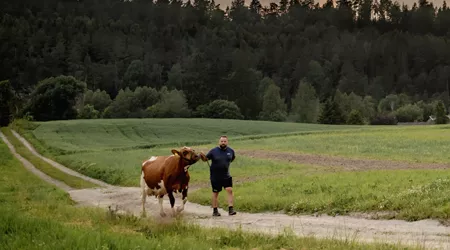Geno, with its mission for breeding for better lives, continues to lead in the implementation of genomic selection for its Norwegian Red breed that has currently been exported to more than 30 countries worldwide. To help progressive dairy farmers choose Norwegian Red sires with confidence, Geno continues to enforce genomic-based breeding values to predict the values with high reliability.
As we try to get a better understanding of the implementation of genomic technologies that have contributed to the increased genetic gain in the Norwegian Red population, we sat down and had a conversation with Professor Theo Meuwissen, who was among the first to introduce genomic selection in livestock animals. Professor Meuwissen has also done much research directed at breakthrough technologies in genetic improvement and is regarded among the world-leading scientists within animal breeding and genetics.
Geno: You have developed numerous algorithms in genomic selection, and in 2001 you were among the first who introduced the concept of genomic selection. In the notable scientific paper published in 2001, you wrote about the concept of genomic selection, where you utilized genetic markers simultaneously to predict genomic breeding values, can you please explain your findings?
TM: Yes, working together with two other scientists, Ben Hayes and Mike Goddard, our research uses many genetic markers to predict genomic breeding values. The principle is to estimate the marker effects simultaneously and for many traits at the same time and use these marker effects to predict breeding values of animals without phenotypes or records themselves.
Exponential increase and interest in genomic selection both in Norway and globally
Since the introduction of the concept in 2001 and until around 2010, we saw an exponential increase and interest in genomic selection both in Norway and globally; and this is due to the industry’s ability to collect more data. genomic selection has now been implemented in most breeding programs in one way or another and has become the “standard” in routine genetic evaluations. Geno and the breeding program for Norwegian Red implemented genomic selection as a pre-selection step in 2011, and since 2016, it has been implemented as a routine genetic evaluation.
Geno: In a breeding program in general, especially where we use 100% genomic selected bulls, there’s always a risk of inbreeding, and we tackle this by selecting bulls from different sire lines. Also, to use another method, which was, in fact, invented by you, namely Optimal Contribution (OC) theory. Tell us more about Optimal Contribution and how it works.
TM: Practical breeding schemes are complicated; they demand that you have control to minimize inbreeding. And we all know, inbreeding remains a big issue within the cattle industry. Optimal Contribution is a method that also controls the inbreeding, as sometimes, in genetic evaluation and improvement, could come as a surprise. Optimal Contribution was first implemented for traditional selection but now has been integrated into our genomic selection schemes.
In any selection scheme, some optimal contribution selection is needed, but it is hard to implement, especially when several selection steps are involved. However, Geno has the advantage to control the entire Norwegian Red population through the genomic selections and data collection system, and therefore it’s possible to implement OC to control the inbreeding.
Geno: Internationally, we see an increased demand for crossbreeding. How do you see the possibilities to use genomic selection to evaluate crossbreeds?
TM: For that, we need to collect data from those crossbred animals. We cannot predict the breeding values for crossbreds based on purebred data alone and expect high reliability.
Geno: What about sequencing data – we know it is possible to do whole genome sequencing for a more competitive price now. What is the main advantage of using whole-genome sequence data?
TM: The main benefit is that you can find genes on the genomic level. Especially for traits that have few phenotypes such as feed efficiency.
Geno: If we look at the development of animal breeding, especially livestock since 2000 – almost everything has been about genomic selection, but also crossbreeding has become increasingly relevant, e.g., in pig breeding. What do think about crossbreeding and what will be the future of cattle breeding?
TM: Crossbreeding is excellent and is important for the dairy industry as it allows farmers to breed better cows – and it’s a quick way to achieve genetic gain. Crossbreeding provides us with the best of both. Crossbreeding has been predicted for a long time in cattle, but it hasn’t really happened yet.
Due to the increasing use of genomic selection (and nucleus selection), we have not seen an increase in crossbreeding, which probably is the reason. The use of embryos is most likely something that will become more and more common, but it is still costly, and you need many recipient cows; this means constant contact and partnership with farmers. It is much more costly to keep a closed nucleus breeding population of cattle than pigs or poultry.
More effective breeding for a greener future
Geno: Do you think animal breeding, genetics, and perhaps genomic selection have some positive contributions to tackle climate and sustainability issues?
TM: More effective breeding is the answer, and genomic selection results in more effective breeding. Genetic improvement through animal breeding can contribute to tackling climate issues by constantly working on a more efficient animal in the selection process.
Geno: What about feed efficiency? Are you involved in that?
TM: Yes, we believe that genomic selection and feed efficiency are a good combination due to limited data available on feed efficiency. We are currently investigating this.
Geno: What are you currently working on now?
TM: I am working on genomic optimal contribution on the DNA level – studying traits that might go in undesirable directions. Some say, if you control inbreeding, you do a compromise, but inbreeding control does not reduce the genetic gain. At the same inbreeding rates, it increases genetic gain.
Geno: Finally, tell us about you.
TM: I came from a farm background, I am a farmer’s son, and I was supposed to become a farmer to continue my father’s path in agriculture. I studied agriculture and realized that my passion is towards animal breeding, so I pursued my education and career in Animal Breeding. After completing my Ph.D., I joined and worked in Lelystad – and that is where my scientific career started. I moved to Norway to work with the Norwegian University of Life Science as a Professor in Animal Breeding and Genetics in 2002.



